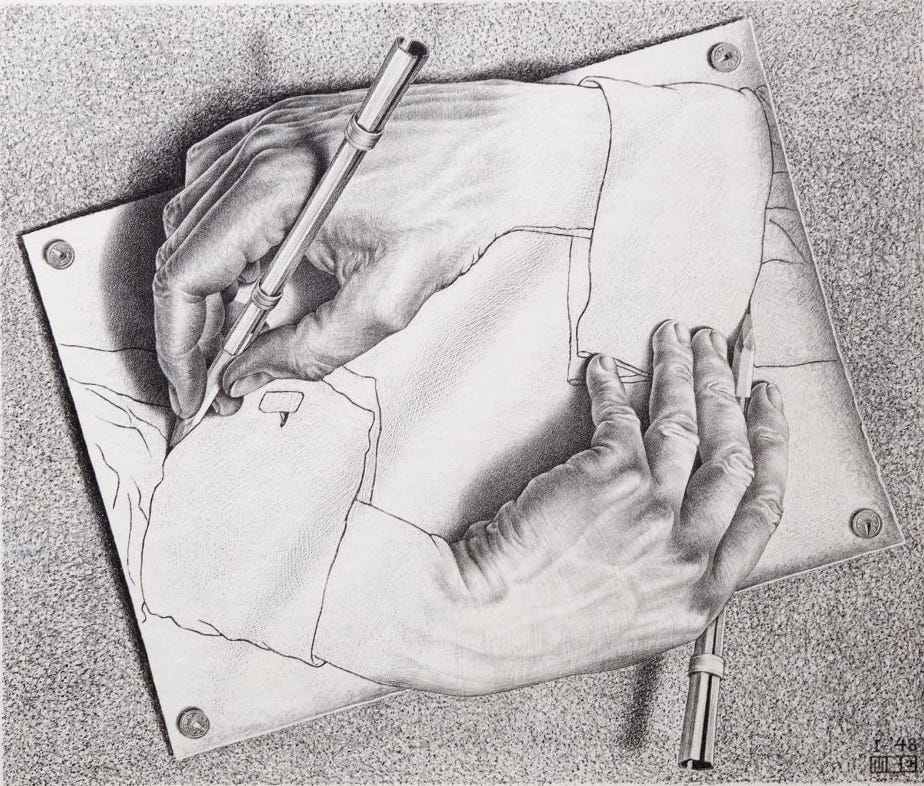Author or Artist as God or Puppet Master
Character as Uncontrollable Creation
Permeable Boundary Between Reality and Fiction
Self-Reference
Each episode began with Happy Hippo at his drawing board, puffing on his pipe and working on a fresh ink drawing of his lead character, a younger, comical, bumbling, and mischievous hippo who was also unnamed, but should have been called Hapless. As soon as Happy had drawn him, Hapless began to romp around the drawing paper, and the adventure got under way. …
All the difficulties that Hapless fell into were concocted by Happy. …
2. We were continually reminded that Hapless was a cartoon character made of ink. …
3. As if a camera were drawing back, the image of Hapless receded on the screen, and we saw the edges of the drawing paper, then the drawing table, Happy’s workroom, and finally Happy himself, chuckling, amused by the predicament that Hapless had gotten into. …Little Follies, “The Fox and the Clam”
There are countless examples, starting with the very advent of the form, of self-reflexive, quasi-Brechtian animated cartoons that purport to show us how they were made. In the pre-cel era, these included the vaudevillian films of McCay and J. Stuart Blackton, who starred as magicians of the pen endowed with the power of cinema to conjure living drawings before our eyes. As Donald Crafton has shown, the trope of the animator’s self-figuration continued through the early 1920s, with the early cartoons of Hurd, Fleischer, and Lantz. But soon the magic of the animators was transferred to their creations, which were granted the abil- ity to animate themselves; thus Felix the Cat and Oswald the Lucky Rabbit and Mickey Mouse could miraculously improvise anything—propellers, punctuation marks, staircases—out of their own bodies. The putative hand of the artist would continue to resurface, most famously in Disney’s The Three Caballeros (1944) and Chuck Jones’s Duck Amuck (Warner Bros., 1953), but these hands were always animated themselves.
Hannah Frank, Frame by Frame: A Materialist Aesthetics of Animated Cartoons

[more to come on Tuesday, October 26, 2021]
Have you missed an episode or two or several?
You can catch up by visiting the archive or consulting the index to the Topical Guide.
You can listen to the episodes on the Personal History podcast. Begin at the beginning or scroll through the episodes to find what you’ve missed.
At Apple Books you can download free eBooks of “My Mother Takes a Tumble,” “Do Clams Bite?,” “Life on the Bolotomy,” and “The Static of the Spheres,” the first four novellas in Little Follies.
You’ll find an overview of the entire work in An Introduction to The Personal History, Adventures, Experiences & Observations of Peter Leroy. It’s a pdf document.



